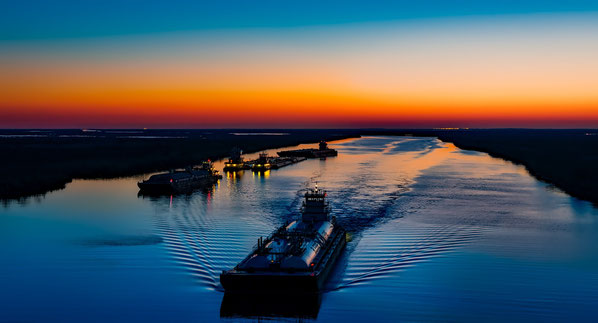Ankron offers VGP services
Managing the VGP status of a vessel or even an entire fleet can be challenging. The timely planning of each ship's testing schedule and the documentation requirements often leads to a problematic process for ship operators, owners and contracted service providers.
Ankron supports shipowners and operators in complying with the Vessel General Permit (VGP) requirements if operating in US waters. With certified environmental analyses and customised testing concepts, you can be sure of legally compliant processes and reliable laboratory results. Ankron's service covers a lot of international ports.
Our VGP service includes:
- close contact to the vessel before testing to ensure best preparation and smooth operations
- sample collection according to EPA standards with EPA approved methods and devices
- Laboratory testing according to VGP 2013 and CFR 136.3 standards
- Reporting adapted to EPA requirements
- Discharges: Ballast water, bilge water, gray water, scrubber wash water

The regulation: EPA Vessel General Permit (VGP) 2013
The Vessel General Permit (VGP) 2013 is a regulation issued by the US Environmental Protection Agency (EPA) to control pollution by discharges from vessels.
The regulation applies to all non-military and non-recreational vessels 79 feet (24 metres) or longer operating in U.S. waters and requires regular monitoring of all discharges that occur during normal vessel operations. Every vessel operating in U.S. waters must have a current Vessel General Permit (VGP).
The 2013 VGP establishes requirements for various types of discharges and sets limits and test specifications for ballast water, bilge water, grey water and scrubber wash water.
Ship operators are required to carry out the necessary testing and provide the EPA with evidence of compliance. Failure to comply can result in significant fines and penalties from the EPA.

VGP requirements for ballast water
Ship owners must provide the following evicence as proof of compliance with the VGP requirements for the respective vessel:

- Sampling of ballast water discharge in a pre-defined test frequency
- Analysis for several indicator organisms and residual biocides (depending on your treatment system) by an independent laboratory
- Monthly BWMS Functionality Monitoring
- Minimum annual calibration of all applicable BWMS sensors and other relevant BW equipment

- NOI (Notice of Intent) to activate permit coverage
- Annual Report: Summary of all analytical monitoring results for each year with active NOI, submitted by February 28 of the following year
- NOT (Notice of Termination) to terminate permit coverage

- VGP reports of the last three years
- USCG Type Approval
- Ballast Water Management Plan
- Training documentation
VGP test frequencies for ballast water
The testing effort for VGP differs depending on the treatment method and runtime of the installed BWMS.
All systems must demonstrably achieve the D2 standard; here, the analysis takes place twice in the first year and then only once a year.
BWMS that use active substances must also be tested three times in the first year and only twice a year thereafter.

- Initial monitoring starts with the first discharge when the NOI is active.
- There must be at least 14 days between the individual tests.
VGP ballast water effluent limits
In order to fulfil the EPA requirements for the discharge of the tested BWMS, the following limit values must not be exceeded:



If your BWMS uses other biocides, you will find the corresponding limit values in further tables in the VGP regulations.
When scheduling a test, please note that there are between two and fourteen days between sampling and the analysis result, depending on the parameter.

